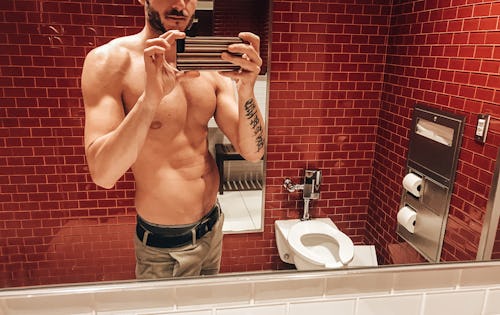
Twitter this week opened up Twitter Circle — its answer to Instagram’s popular Close Friends feature — to many more users across the platform. Like Close Friends, Twitter Circle lets users curate a list of people they’d like to view and interact with exclusive tweets. Circle tweets, as well as replies to those tweets, won’t show up on the timelines of followers not included in the Circle.
It’s no wonder Instagram’s Close Friends feature has taken off in recent years; the ability to create a cohort with which to share less-public Stories posts is very attractive in the image-obsessed world of social media. Also, it’s perfect for posting nudes.
Adding a similar feature to Twitter is a savvy move on the company’s part. Modeling Circle directly after the Close Friends model brings the latter’s less-savory aspects along with its fun, though. A complete lack of opportunity to communicate consent, for one thing.
Close Friends — which Instagram introduced in late 2018 “to share more personal moments with a smaller group that you choose” — is the perfect way for Instagram to convince users to spend even more time on the app. Have a photo or link you wouldn’t even consider sharing with the general public? Well, now you have a place for it.
As you tap through your Stories, regular posts and Close Friends posts intertwine, blurring into one seamless timeline. It’s entirely likely you’ll find yourself going from GoFundMe link to stylized food picture to covert ass pic without even noticing you’ve entered NSFW territory. (This can make browsing Instagram on public transit somewhat awkward.)
In fact, you may encounter such a picture from someone you didn’t even know had added you to their Close Friends list. Instagram provides no notification when you’ve been gifted this exclusivity. Unless the person tells you they’ve done so, you’ll only ever find out by stumbling upon a Close Friends post or spotting the telltale green circle in your Stories lineup.
For some, this may be a happy accident. It can feel very much like the person has deemed you worthy of seeing more of their life, their more private wonderings and photos. Already I’ve seen plenty of Twitter users asking around for an invite to an exclusive Circle list. For others, though, happening upon a friend or stranger’s nudes is less welcome, an overstepping of boundaries. Twitter’s relatively lax stance on NSFW content makes this even more extreme for Circle. And how would one be expected to know those boundaries if no option is given to ask about them?
The more I use Instagram’s Stories features — and, more recently, Twitter Circle — it’s become increasingly clear that there’s an entire variable missing from the Close Friends equation: consent. At no point is consent considered here. The viewer is not asked whether or not they’d like to be included on a given Close Friends list; they are not even given a heads up about the addition. And there’s no way to remove yourself from a Close Friends list if you someday find yourself uncomfortable with its contents. Consent is implied at every step.
As it stands, there are essentially three ways to stop a person’s Close Friends posts from showing up on your feed: mute them, unfollow them, or block them. Twitter has taken the same approach and explicitly answers a question in its FAQ with these options. None actually communicate your lack of consent.
In the three or so years since Close Friends first graced our phone screens, the use of the feature has gone mainstream. Social media companies scrap unsuccessful features all the time (or, at the very least, revamp what’s not working). Close Friends is basically a legacy feature at this point. Three years, in internet time, is nearing an eternity.
I have watched many friends and oomfs (that’s one of my followers, denoting a mutual following/follower relationship) struggle with how, exactly, to use Close Friends in a manner that’s both fun and responsible. The lack of built-in consent is palpable, especially amongst those posting significantly more personal content for their Close Friends. One common tactic is posing the question directly in a Close Friends Post: Are you happy being on this list? It’s a clumsy workaround and one that requires far too much reactionary work on the user’s part.
There are many ways in which Twitter and Instagram could make Circle and Close Friends more consensual, but neither has done so. A central place in the settings menu of each app could allow users to quickly view Circles and Close Friends lists to which they’ve been added. Most useful would be for these additions to be posed as questions — @yourfriend has sent you an invite to be part of their Circle! — to remove the implied consent system we’re currently working with.
Circle is still in its nascency; perhaps Twitter will switch up the system before it’s rolled out to the entire user base. Instagram’s had years, though, with no consent features in sight.







